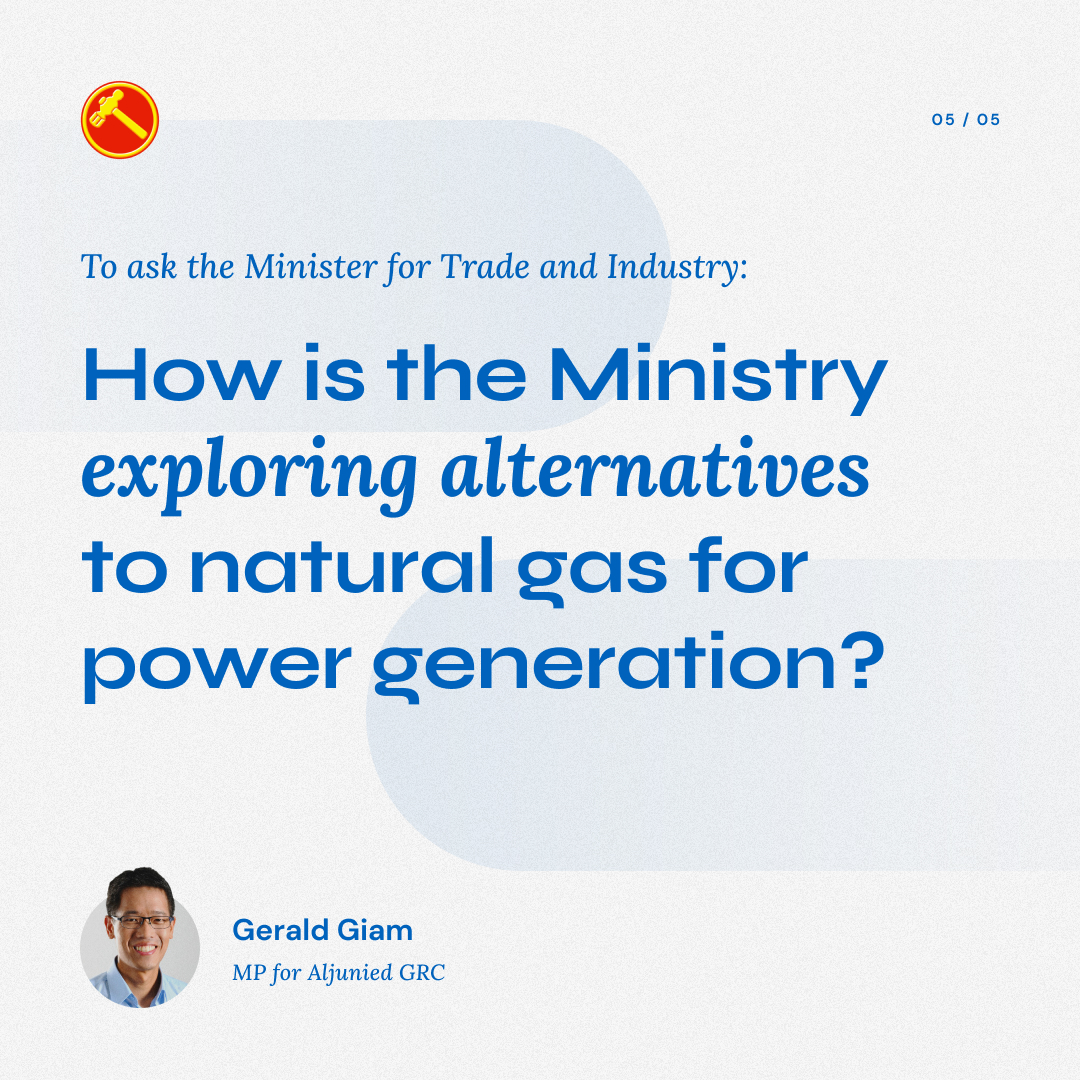Recently four electricity retailers announced they will be exiting the open electricity market while two others have stopped accepting new customers. This will impact over 150,000 households and businesses, who will most likely have to pay more for electricity in the coming months. The price increases can be traced to disruptions in the supply of natural gas to Singapore. About 95% of our electricity is generated from imported natural gas, of which around 70% is piped from Malaysia and Indonesia.
I have filed two sets of Parliamentary questions for the Minister for Trade and Industry.
First, I asked how many households are expected to have their contracts transferred back to SP Group in the next few months and what is the expected increase in electricity price they will face. How will the Government be assisting households who are negatively impacted?
Second, I have asked why piped natural gas from Indonesia was curtailed recently and what other such disruptions have occurred in the last six months. How long will our reserves of liquified natural gas last under current conditions? I have asked for an update on how the Government is exploring alternatives to natural gas for power generation.
This is the full text of my questions to be answered on 1 Nov 2021:
Mr Gerald Giam Yean Song: To ask the Minister for Trade and Industry regarding the recent exit of several electricity retailers from the open electricity market (a) how many households are expected to have their contracts transferred back to SP Group in the next few months; (b) what is the expected increase in electricity prices they will face with this change; and (c) how is the Ministry assisting households negatively affected by these changes.
Mr Gerald Giam Yean Song: To ask the Minister for Trade and Industry (a) what are the reasons for the recent curtailment of piped natural gas (PNG) from West Natuna; (b) what other disruptions to PNG supplies have been experienced in the past six months; (c) whether Singapore has had to use its reserves of liquified natural gas; (d) how long will these reserves last under current conditions; and (e) how is the Ministry exploring alternatives to natural gas for power generation.
